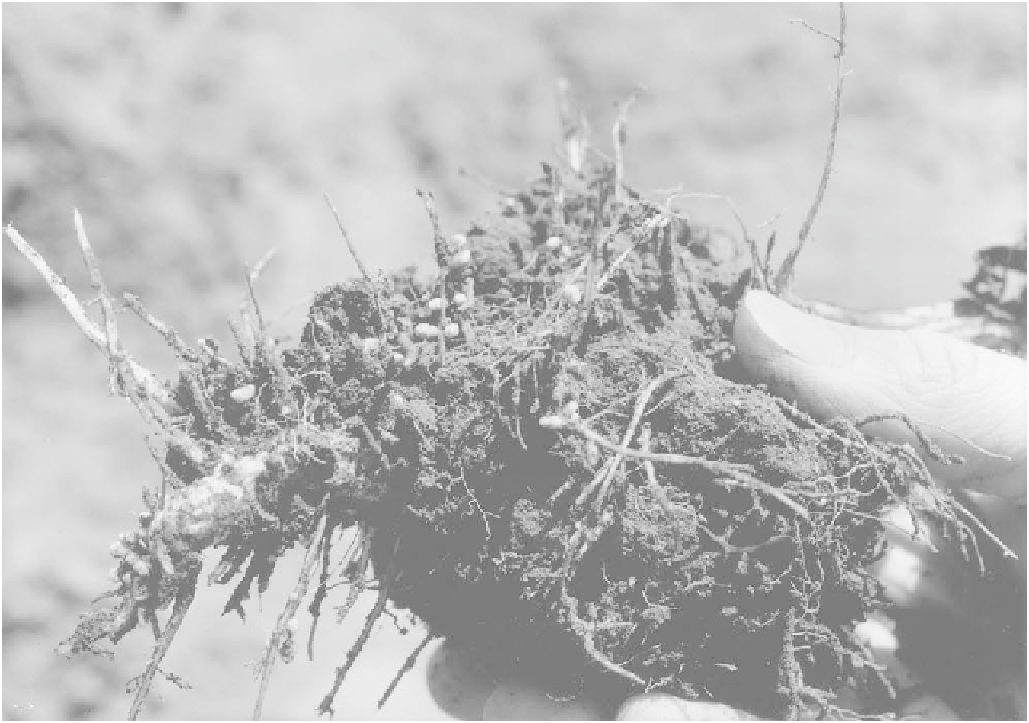Agriculture Reference
In-Depth Information
FIGURE 11.3
Nodules on the roots of fava beans.
The nodules are inhabited by nitrogen-fixing
Rhizobium
bacteria in mutualistic
association with the legume.
the root tissue of a legume plant, causing the tissue to form
nodules in which the bacteria live and reproduce. The
nodules, formed from root tissue, represent addition inter-
ference on the part of the legume plant. The legume also
provides the bacteria with sugars. The bacteria's addition
interference comes in the form of fixed (useable) nitrogen,
which the bacteria produce from atmospheric nitrogen. The
legume would be greatly handicapped in its growth without
the fixed nitrogen provided by the bacteria, and the bacteria
require the root nodules for optimal growth and reproduc-
tion. The fixing of nitrogen by Rhizobia is one the most
important means by which nitrogen is moved from the vast
atmospheric reservoir into soil and biomass.
As we will see in later chapters, such beneficial mutu-
alisms, where two or more members of the relationship
interact through addition interference, is of major impor-
tance in the design and management of many intercrop-
ping agroecosystems.
(Gliessman, 1989, 2002a). Allelopathy is the production
of a compound by a plant that when released into the
environment has an inhibitory or stimulatory impact on
other organisms. Allelopathic interactions have been
shown to occur in a wide variety of natural ecosystems
and agroecosystems.
Allelopathic compounds are natural products that may
be direct metabolites, byproducts of other metabolic path-
ways, or breakdown products of compounds or biomass.
The compounds are often toxic to the plant that produces
them if they are not stored in some nontoxic form or
released before they build up internally to toxic levels. In
some cases, even when the toxins are released from the
plant, they may build up in the immediate environment
and become toxic to the plant that produced them. Allelo-
pathic compounds take many forms, from water soluble
to volatile, simple to complex, and persistent to very short-
lived. The most common allelopathic compounds fall into
such chemical groups as tannins, phenolic acids, terpenes,
and alkaloids.
Allelopathic products are released from the plant in a
variety of ways. They can be washed off of green leaves,
leached out of dry leaves, volatilized from the leaves,
Allelopathy
A form of interference that has received considerable
attention recently, especially in agriculture, is
allelopathy

Search WWH ::

Custom Search